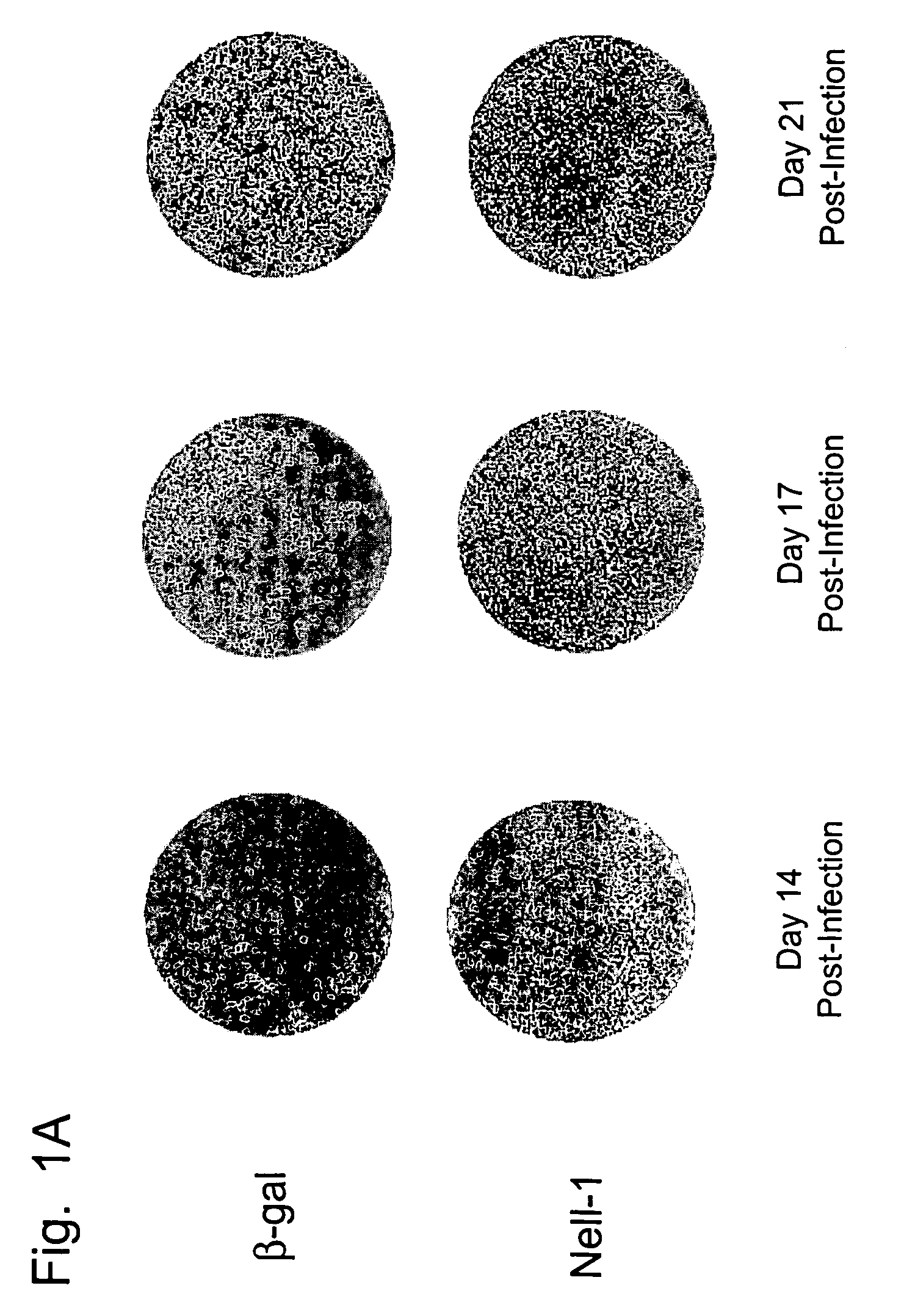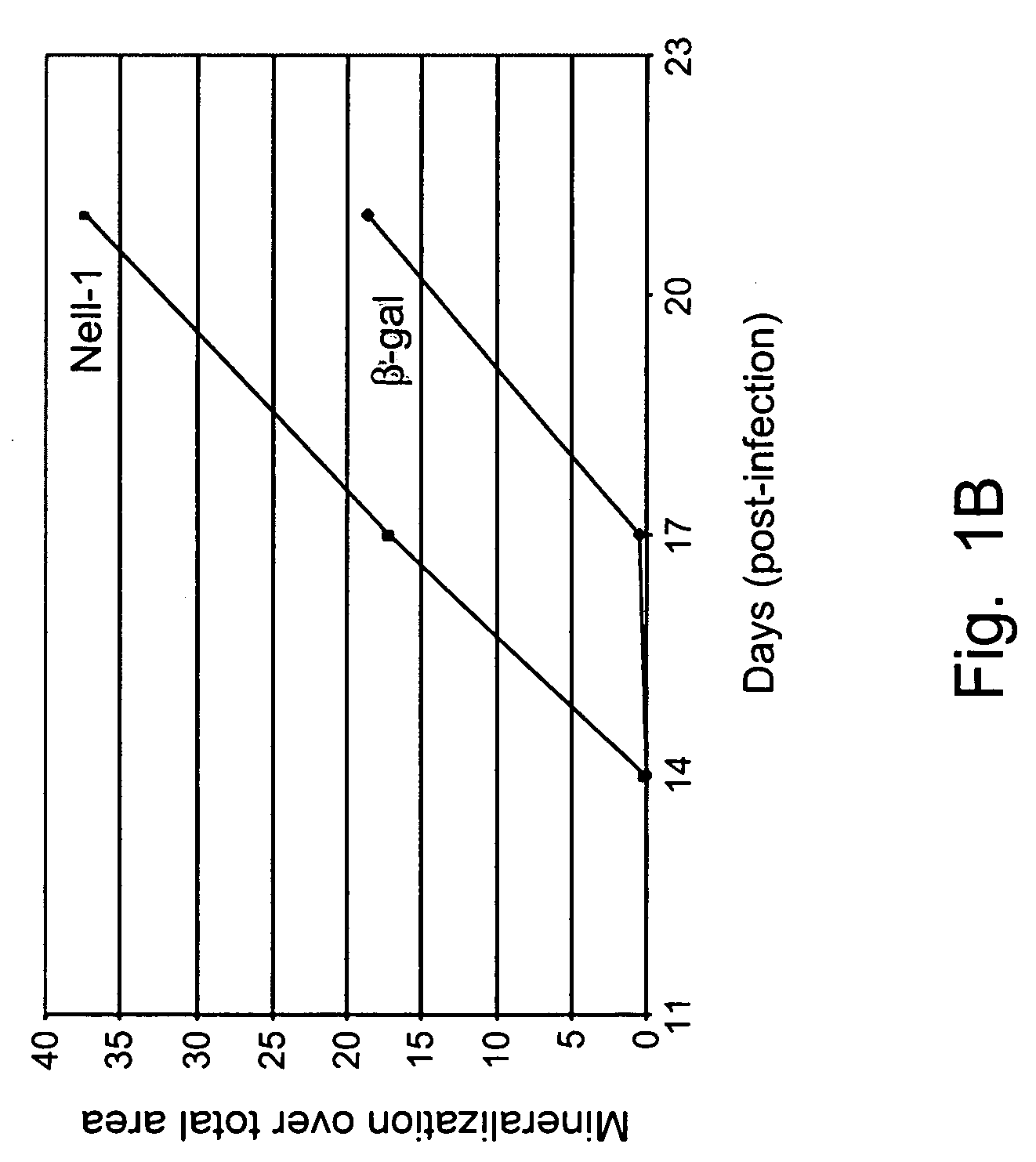NELL-1 enhanced bone mineralization
a bone mineralization and enhanced technology, applied in the field of enhanced bone mineralization, can solve the problems of difficult harvesting a useful amount of autologous bone, significant cost and difficulty, and inability to achieve significant cost and difficulty, and achieve the effect of speeding up fracture repair
- Summary
- Abstract
- Description
- Claims
- Application Information
AI Technical Summary
Benefits of technology
Problems solved by technology
Method used
Image
Examples
example 1
NELL-1 Enhances Mineralization in Fetal Calvarial Osteoblastic Cells
[0166] The nucleotide sequence of the full length cDNA of the NELL-1 gene described herein has approximately 61% homology to the chicken Nel gene, and therefore, was named human NELL-1 (Watanabe et al. (1996) Genomics. 38(3), 273-276). NELL-1 proteins contain a signal peptide, a NH2-terminal thrombospondin (TSP)-like module (Francois and Bier (1995) Cell. 80(1):19-20), five von Willebrand factor C domains, and six EGF-like domains.
[0167] The human NELL-1 gene expressions were primarily localized in the mesenchymal and osteoblast cells at the osteogenic front, along the parasutural bone margins, and within the condensing mesenchymal cells of newly formed bone. A human multiple-organ tissue mRNA blot showed that human NELL-1 was specifically expressed in fetal brain but not in fetal lung, kidney or liver. We also demonstrated that NELL-1 was expressed in rat calvarial osteoprogenitor cells but was largely absent in ...
PUM
| Property | Measurement | Unit |
|---|---|---|
| weight percent | aaaaa | aaaaa |
| Tm | aaaaa | aaaaa |
| diameter size | aaaaa | aaaaa |
Abstract
Description
Claims
Application Information
 Login to View More
Login to View More - R&D
- Intellectual Property
- Life Sciences
- Materials
- Tech Scout
- Unparalleled Data Quality
- Higher Quality Content
- 60% Fewer Hallucinations
Browse by: Latest US Patents, China's latest patents, Technical Efficacy Thesaurus, Application Domain, Technology Topic, Popular Technical Reports.
© 2025 PatSnap. All rights reserved.Legal|Privacy policy|Modern Slavery Act Transparency Statement|Sitemap|About US| Contact US: help@patsnap.com


